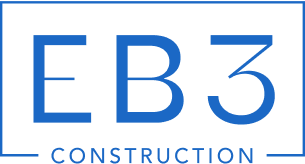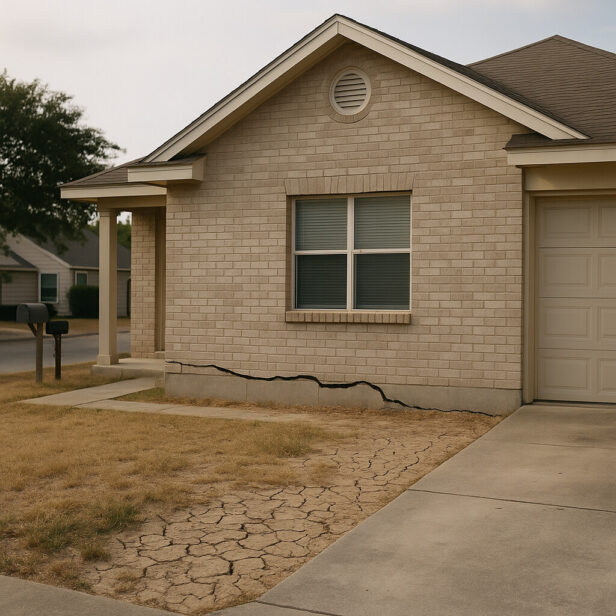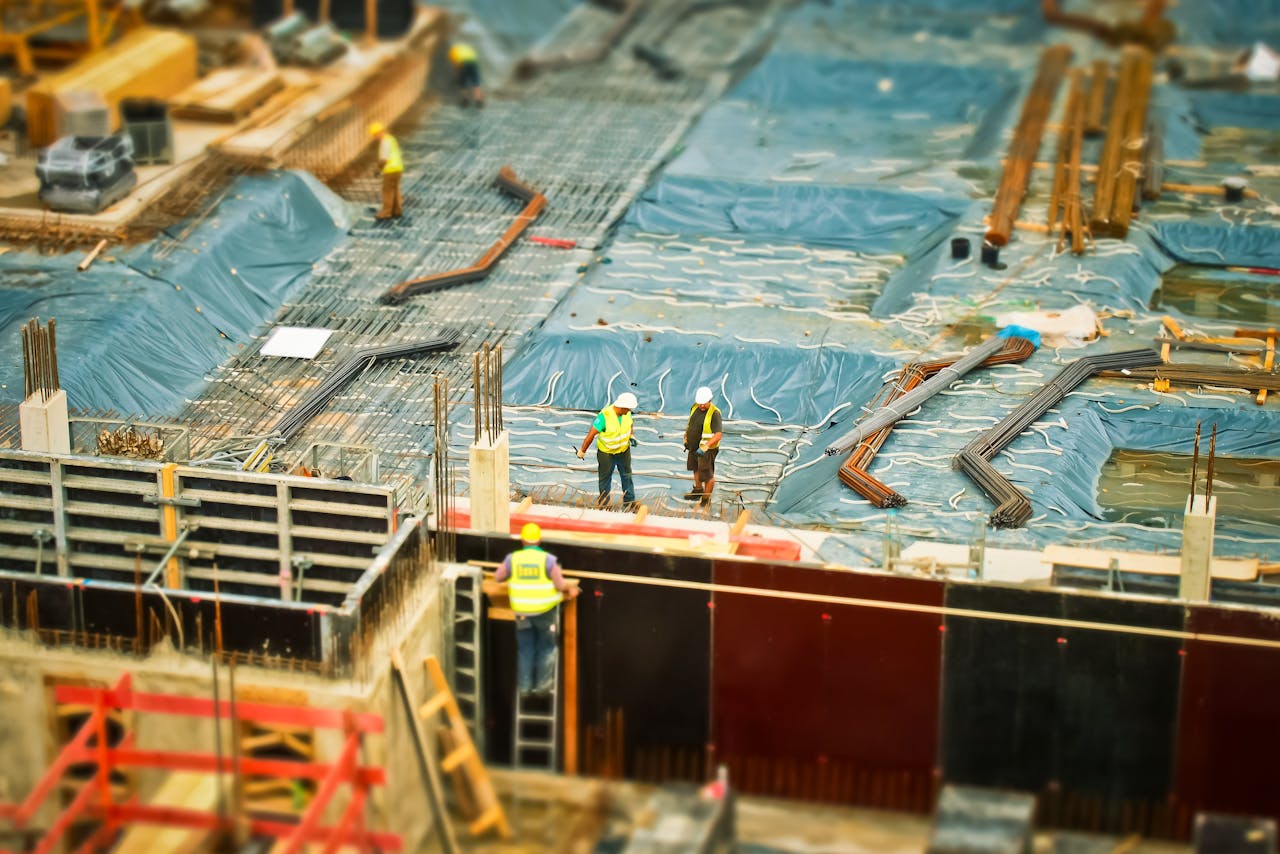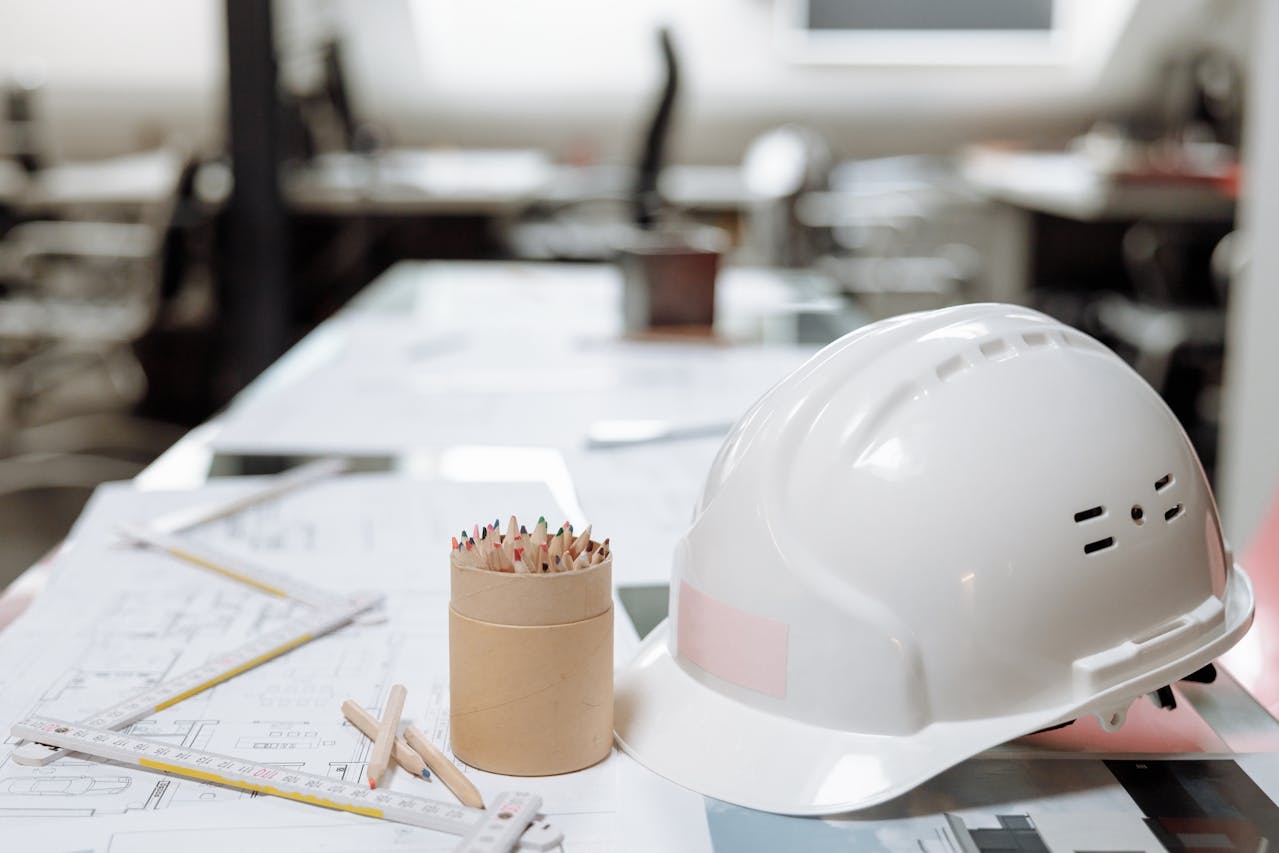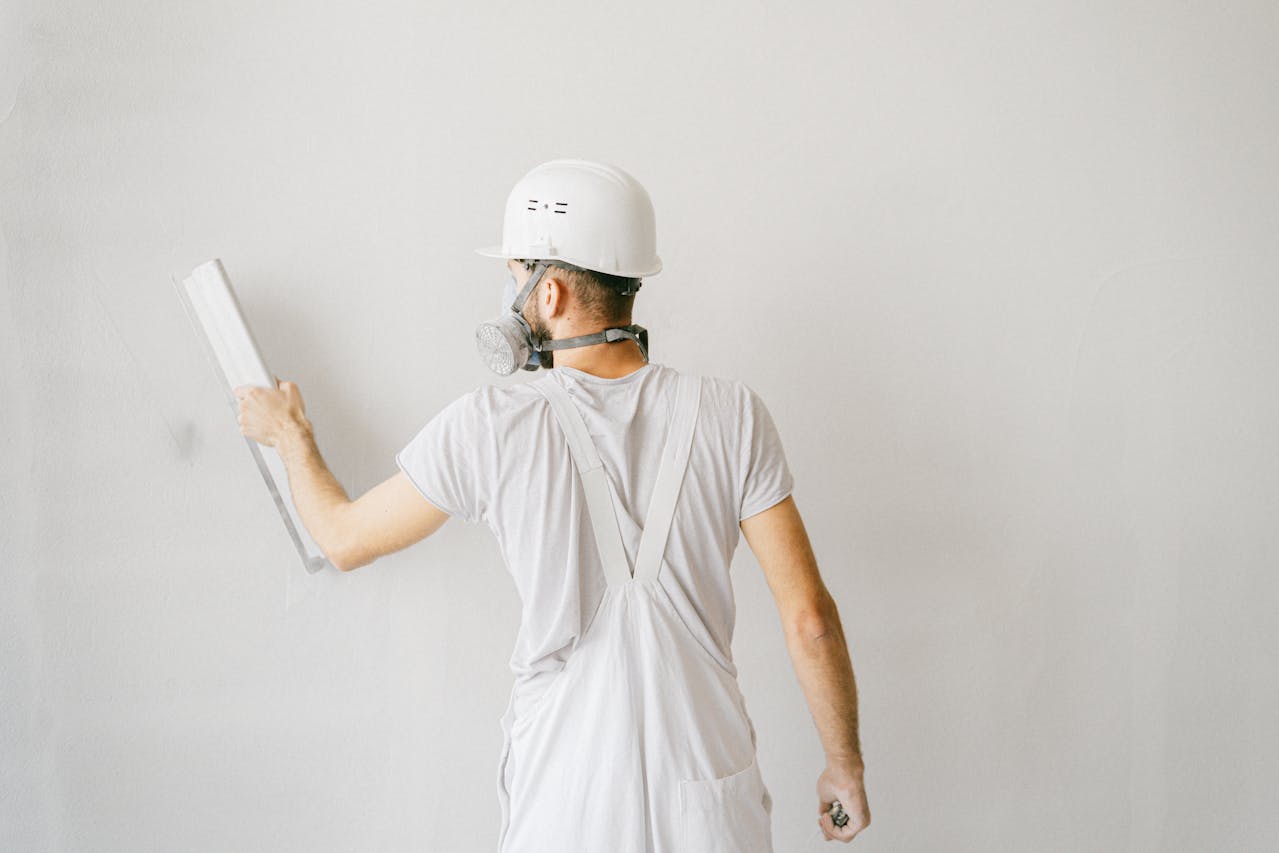Nearly one in three property owners in San Antonio will encounter foundation challenges during their ownership. The reason? Expansive clay soils dominate the Blackland Prairie region, where the city is located. These soils act like temperamental sponges due to South Texas’ dramatic weather cycles. At EB3 Construction, we’ve seen firsthand how these conditions create a relentless expansion-contraction cycle that can compromise even the most solidly built structures.
Foundation issues in San Antonio aren’t just common—they’re practically inevitable given the geological conditions. We approach each project with a thorough understanding of the region’s unique soil composition—a complex mixture of clay, limestone, and caliche that responds dramatically to moisture changes. Drought periods followed by San Antonio’s characteristic downpours create ideal conditions for foundation movement, especially when drainage patterns direct water toward your building’s foundation.
Our foundation stabilization work begins with recognizing early warning signs: uneven floors, doors that won’t close properly, or cracks appearing in drywall and exterior brickwork. These symptoms, while concerning, present opportunities for intervention before structural integrity is compromised. By implementing tailored solutions specific to San Antonio’s soil dynamics, we establish long-term stability that protects your property investment.
What Are the Warning Signs of Foundation Problems in San Antonio Homes?
San Antonio’s expansive clay soil creates a perfect storm for foundation issues. The continuous cycle of soil expansion during rainy seasons and contraction during drought puts tremendous pressure on your home’s foundation. As general contractors who have tackled countless foundation repair projects, we’ve seen firsthand how these conditions gradually undermine structural integrity.
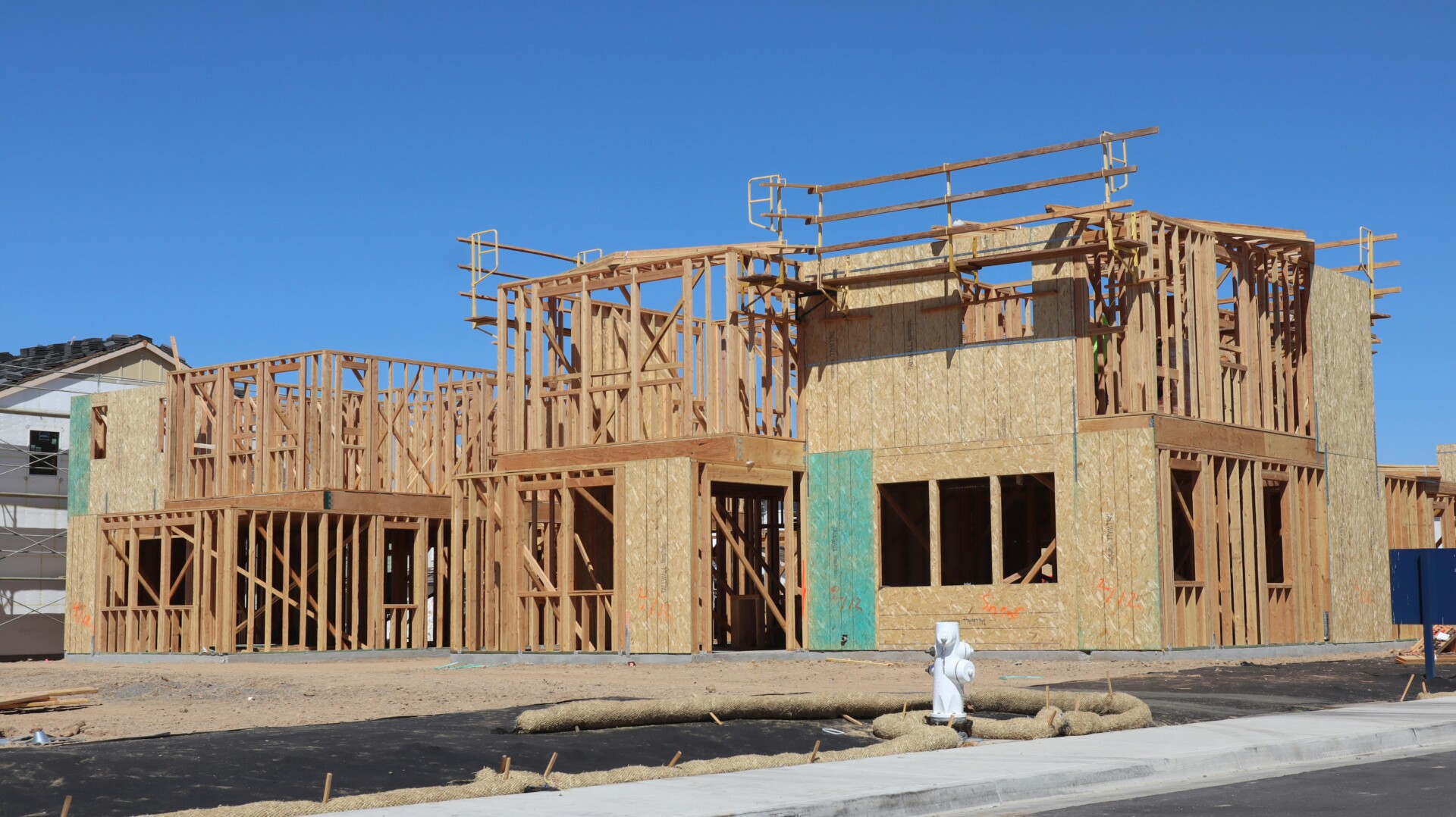
Exterior Warning Signs
Exterior brick cracks often serve as the most visible red flags of foundation problems. Both horizontal and vertical cracks in your brick exterior indicate structural movement that shouldn’t be ignored. These fractures typically appear when the foundation shifts unevenly, forcing the brick veneer to crack at stress points.
Pay close attention to frieze board separation—the gap between the top of your brick wall and the trim board beneath your roofline. When these components pull apart, it signals your foundation is moving in ways that compromise your home’s structural envelope. The wider these gaps become, the more serious the underlying foundation issue.
Cracks around garage door frames and exterior window openings tell a similar story. When these openings become distorted due to foundation movement, they create visible stress fractures as the building materials try to accommodate the shift. We often find these symptoms most pronounced on the side of homes facing the greatest soil movement.
Interior Warning Signs
Inside your home, wall cracks—especially those that form around doorways and windows—provide clear evidence of foundation problems. These typically appear as diagonal cracks extending from the corners of door frames or window casings, sometimes widening as they progress upward. Sheetrock and drywall have minimal flexibility, making them excellent indicators of structural movement.
Doors and windows that suddenly begin to stick or swing freely on their own reveal misalignment caused by shifting foundations. When frames become out of square, doors may drag against the floor or develop gaps at the top. The problem tends to worsen over time, with previously well-functioning doors becoming increasingly difficult to operate.
Floor symptoms often develop gradually but become unmistakable as foundation problems progress. Cracking in tile floors, buckling in laminate or hardwood surfaces, and sloping or uneven floors all indicate the foundation beneath is no longer providing consistent support. We frequently find floor issues most noticeable in larger rooms where the span allows more pronounced movement.
| Foundation Issue | Potential Cause | Repair Urgency |
|---|---|---|
| Wall Cracks | Soil Shifting | High |
| Sticking Doors | House Settling | Medium |
| Uneven Floors | Foundation Sinking | High |
Subtle Signs That Demand Attention
Beyond the obvious indicators, we encounter numerous subtle signs that homeowners often overlook. Cabinets and countertops that pull away from walls create small but telling gaps. Fixtures like towel bars or toilet paper holders may feel loose or wobbly as the walls they’re attached to shift slightly with foundation movement.
Ceiling cracks, particularly those that run parallel to interior walls, often indicate stress transfer occurring throughout the structure. As the foundation moves, the entire frame responds, creating tension that manifests in ceiling surfaces. These may appear as hairline cracks initially but typically worsen as foundation problems progress.
Visible cracks in your slab foundation represent the most direct evidence of foundation failure. While not always visible without removing flooring, these can sometimes be spotted in garages, utility rooms, or areas with exposed concrete. Any crack wider than 1/8 inch warrants immediate professional assessment, as it indicates significant structural compromise.
Climate Factors Unique to San Antonio
San Antonio’s weather patterns exacerbate foundation challenges in ways not seen in other regions. The city’s extended drought periods followed by intense rainfall create extreme soil moisture fluctuations. We find foundation problems tend to accelerate during seasonal transitions when soil conditions change most dramatically.
The clay-heavy soil common throughout San Antonio has exceptional shrink-swell capacity. During drought, this soil contracts significantly, potentially causing foundation settlement. Conversely, when heavy rains arrive, the soil expands dramatically, exerting upward pressure that can lift portions of your foundation. This continuous cycle gradually stresses and deteriorates even well-constructed foundations.
Tree roots compound these issues by drawing moisture from the soil during dry periods. Large trees positioned near your home can create localized dry zones, causing portions of your foundation to settle more than others. The resulting differential movement creates many of the warning signs we’ve discussed, particularly on the side of the home nearest substantial vegetation.
What Foundation Repair Methods Are Used by San Antonio Professionals?
San Antonio’s expansive clay soil presents unique challenges for property owners. When this soil absorbs moisture, it swells; when dry, it shrinks—creating a constant push-pull effect on foundations. We’ve developed specialized approaches to counteract these forces and restore structural integrity to compromised foundations.
Steel Pier Systems
Our most robust solution involves interlocking steel pipes that penetrate deep beneath the home’s foundation. We install these 12-inch steel pipes with friction reduction plates and fill them with cement to prevent failure over time. Unlike other methods, steel piers can reach depths of up to 75 feet—five times deeper than concrete cylinders.
This approach offers superior load-bearing capacity, making it our preferred method for addressing significant foundation issues in San Antonio’s challenging soil conditions. The depth allows us to bypass problematic soil layers and anchor to stable bedrock, providing permanent stabilization. Most reputable contractors back steel pier installations with lifetime transferable warranties.
For property developers dealing with complex commercial structures, steel pier systems offer the structural reliability needed for long-term value preservation. During installation, we carefully excavate around the foundation perimeter, creating access points where hydraulic equipment drives the piers to their needed depth.
Helical Pier Systems
When working with unstable soil conditions or when minimal ground disturbance is required, we often recommend helical pier installations. These specialized steel shafts feature round helix plates that effectively screw into the ground, creating minimal vibration while providing excellent support.
We find helical piers particularly valuable when addressing bowed walls or when lifting fragile structures built on sandy soils. The installation process requires less heavy equipment than other methods, making it ideal for sites with limited access. The helical design creates exceptional tension and compression support, effectively transferring the structure’s weight to stable soil layers below.
For property owners concerned about landscape disruption, helical piers typically require smaller excavation points and create less site impact than traditional methods. The screw-like installation allows us to achieve precise depth requirements with minimal soil displacement.
| Method | Description | Benefits | Limitations |
|---|---|---|---|
| Mudjacking | Injecting a slurry beneath concrete slabs to raise them | Cost-effective, minimal disruption | Shorter warranty, not for deep foundation issues |
| Steel Pier Systems | Interlocking steel pipes driven deep beneath the foundation | Superior load-bearing, permanent stabilization | Higher cost, extensive installation |
| Helical Pier Systems | Steel shafts with helix plates screwed into the ground | Minimal vibration, ideal for unstable soils | Requires precise installation |
| Pressed Concrete Piers | Concrete cylinders driven into the ground | Good value, established method | Limited depth compared to steel piers |
Mud Jacking and Slab Leveling
For sunken or uneven concrete slabs that don’t require deep foundation work, we implement mud jacking—a cost-effective repair method that addresses surface-level issues. This technique involves injecting a slurry mixture of water, soil, sand, and cement beneath concrete slabs to raise them back to proper elevation.
The process begins with drilling strategic access holes through the affected slab. We then pump the stabilizing mixture under hydraulic pressure, filling voids and gently lifting the concrete back to its original position. This approach works particularly well for driveways, porches, and other non-load-bearing concrete elements that have settled over time.
While typically carrying shorter warranties than pier systems (usually around 5 years), mud jacking provides an economical solution for specific settlement issues. The repair can often be completed in a single day with minimal disruption to the property.
Pressed Concrete Piers
As a traditional foundation repair approach, concrete piers remain a viable option for certain applications. We implement these by driving concrete cylinders into the ground beneath the foundation to provide supplemental support. While not reaching the depths of steel systems, concrete piers offer an established repair method that has performed reliably in many applications.
The installation involves hydraulically pressing precast concrete sections into the soil until reaching the point of refusal—where the soil becomes dense enough to support the structure’s weight. We then connect the pier system to the foundation using specialized brackets that transfer the load from the compromised foundation to the new support system.
Concrete piers generally offer good value for moderate foundation issues, especially where extreme depths aren’t required. Their proven track record makes them a familiar option for many property owners seeking foundation stabilization at a reasonable cost point.
Drainage Solutions as Preventive Measures
Beyond structural repairs, we implement comprehensive drainage solutions to address the root causes of foundation problems. French drains, catch basins, and proper grading work together to manage water movement around the property, helping prevent future foundation settlement.
Effective water management is particularly crucial in San Antonio’s clay soil environment. By controlling how water flows around and away from the foundation, we create conditions that minimize the expansion and contraction cycles that stress foundations. This preventive approach complements structural repairs and extends their effectiveness over time.
For new construction projects, we often recommend incorporating these drainage elements during the building phase to mitigate potential foundation issues before they develop. For existing structures, adding proper drainage can significantly reduce the risk of recurrent foundation problems following repairs.
What Factors Affect Foundation Repair Costs in San Antonio?
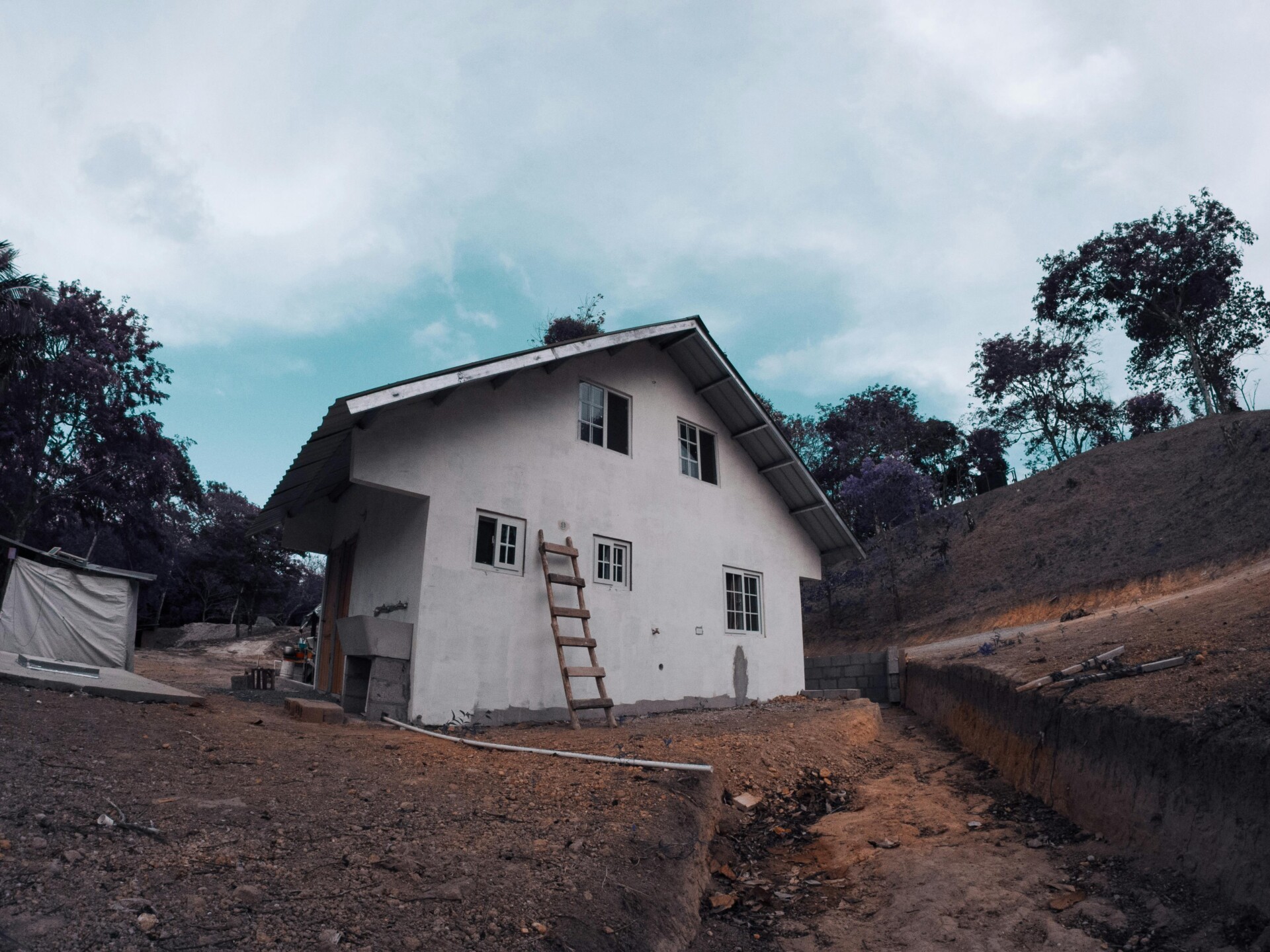
Foundation repair costs in San Antonio typically range from $7,000 to $15,000, depending on several key variables unique to your property. Understanding these factors helps property owners and developers anticipate expenses and make informed decisions when foundation issues arise.
Foundation Type and Structure
The design of your foundation significantly impacts repair costs. Slab foundations, common throughout San Antonio, often require different intervention methods than pier and beam structures. Pier and beam repairs sometimes allow for more targeted solutions, focusing only on affected areas rather than comprehensive underpinning.
The size of your foundation directly correlates with repair expenses. Larger foundations require more materials, labor hours, and often more complex engineering solutions. This square footage factor can substantially affect the bottom line of any foundation repair project.
Damage Severity and Scope
Minor issues like hairline cracks might be addressed for $500 to $3,000, while structural shifts requiring complete foundation stabilization can push costs toward the upper end of the $15,000 range. The progressive nature of foundation damage makes early intervention crucial — what begins as a simple crack can evolve into major structural concerns if left unaddressed.
We assess damage extent by examining wall cracks, door functionality, floor levelness, and other telltale signs. The more comprehensive the damage pattern across your property, the more extensive the repair solution must be, driving costs accordingly.
| Repair Method | Cost Range |
|---|---|
| Minor Repairs | $1,000 – $5,000 |
| Moderate Repairs | $5,000 – $15,000 |
| Major Repairs | $20,000 – $30,000+ |
Repair Methodology
Different repair approaches come with varying price points. Steel piling systems, while more expensive initially, offer superior long-term stability in San Antonio’s clay-heavy soils. Hydraulic jacking systems, concrete piers, and foam injection all present different cost structures based on materials, equipment needs, and installation complexity.
We evaluate which method best suits each property’s specific conditions rather than applying one-size-fits-all solutions. This customized approach ensures cost-effectiveness while addressing the unique requirements of your foundation problem.
Soil Conditions and Environmental Factors
San Antonio’s expansive clay soils present specific challenges that affect repair costs. These soils expand when wet and contract during drought conditions, creating cyclical pressure on foundations. Properties with particularly problematic soil compositions often require more robust, comprehensive solutions that increase overall project costs.
Drainage issues frequently accompany foundation problems, as water management directly impacts soil stability. When we identify drainage concerns, addressing these becomes part of the complete repair solution, potentially adding $1,000-$3,000 to the project scope but preventing future foundation movement.
Additional Cost Considerations
Beyond the core repair work, several supplementary expenses may factor into your total investment. Engineering inspections, necessary for comprehensive assessment and repair validation, typically add $300-$800. Permit fees vary by municipality within the greater San Antonio area but generally range from $150-$500 for foundation work.
Plumbing tests often become necessary as foundation movement can damage underground pipes. These inspections help identify hidden issues that could undermine repair efforts if left unaddressed. We coordinate these assessments to minimize disruption to your property operations while ensuring comprehensive problem resolution.
Why Choose Professional Foundation Repair in San Antonio?
When foundation issues arise at your San Antonio property, the stakes are incredibly high. The foundation supports everything above it—from load-bearing walls to valuable finishes. We’ve seen how DIY foundation repairs or hiring inexperienced contractors can turn minor settling issues into structural nightmares requiring extensive rehabilitation.
Specialized Knowledge of Local Conditions
San Antonio’s expansive clay soils present unique challenges that require specialized approaches. These soils expand significantly during rainy periods and contract during drought cycles, creating constant stress on foundations. As experienced contractors, we maintain comprehensive soil maps of neighborhoods throughout Bexar County, allowing us to anticipate challenges specific to your property’s location.
When we conduct foundation evaluations, we don’t just examine visible symptoms like wall cracks or sticking doors. Our approach includes analyzing drainage patterns, soil composition, and vegetation factors that influence foundation performance. This comprehensive assessment ensures we identify and address root causes rather than merely treating symptoms.
The unpredictable Texas weather compounds these challenges. During extended drought periods, we often implement strategic watering protocols to maintain consistent soil moisture around foundations. Following heavy rains, proper drainage becomes critical—another area where professional insight proves invaluable.
Advanced Equipment and Proven Techniques
Foundation repair requires specialized equipment that most property owners don’t have access to. Our fleet includes hydraulic jacks, pier driving systems, and precision leveling tools calibrated to within 1/10th of an inch. This equipment investment, representing tens of thousands of dollars, is necessary to deliver reliable results.
Different foundation issues require different solutions. For slab foundations, we might employ pressed concrete piers, steel piers, or hybrid systems depending on soil conditions and structure requirements. For pier and beam foundations, we carefully assess floor joist integrity, beam conditions, and support pier stability before implementing repairs. This tailored approach ensures optimal results for your specific foundation type.
The techniques we employ have been refined through decades of industry advances and real-world applications. From strategic mud-jacking to comprehensive drainage corrections, we bring proven methodologies that stand the test of time in San Antonio’s challenging environment.
Long-Term Protection Through Warranties
Perhaps the most compelling reason to choose professional foundation repair is accountability and peace of mind. We stand behind our work with substantial warranties that often transfer to subsequent property owners. This coverage provides invaluable protection for what is likely your largest investment.
The warranty coverage extends beyond simply promising to return if something goes wrong. It represents our confidence in proper diagnosis, appropriate solution selection, and quality installation. When properly executed, foundation repairs should last decades, and our warranty terms reflect this expectation.
While upfront costs might seem higher when choosing established professionals, the long-term value becomes apparent when considering warranties, durability, and prevention of cascading structural issues. Most of our clients recognize that foundation repair is an investment in their property’s structural integrity and market value.
Financial Flexibility Through Financing Options
We understand that unexpected foundation repairs can strain household budgets. That’s why we’ve established relationships with financing partners who specialize in home improvement loans. Many of our clients take advantage of same-as-cash options, which provide interest-free periods ranging from 6 to 18 months for qualified applicants.
For more extensive projects, longer-term financing with competitive interest rates makes necessary repairs immediately accessible while spreading payments over manageable timeframes. We’ve seen how these financing solutions prevent property owners from delaying critical repairs that could worsen over time, ultimately saving money through early intervention.
Beyond traditional financing, we help clients navigate insurance claims when applicable. While standard homeowner’s policies typically exclude foundation issues arising from soil conditions, they often cover damage resulting from sudden water events or plumbing failures. Our documentation practices support insurance claims with the detailed evidence adjusters require.
Conclusion: Protecting Your San Antonio Home with Timely Foundation Repair
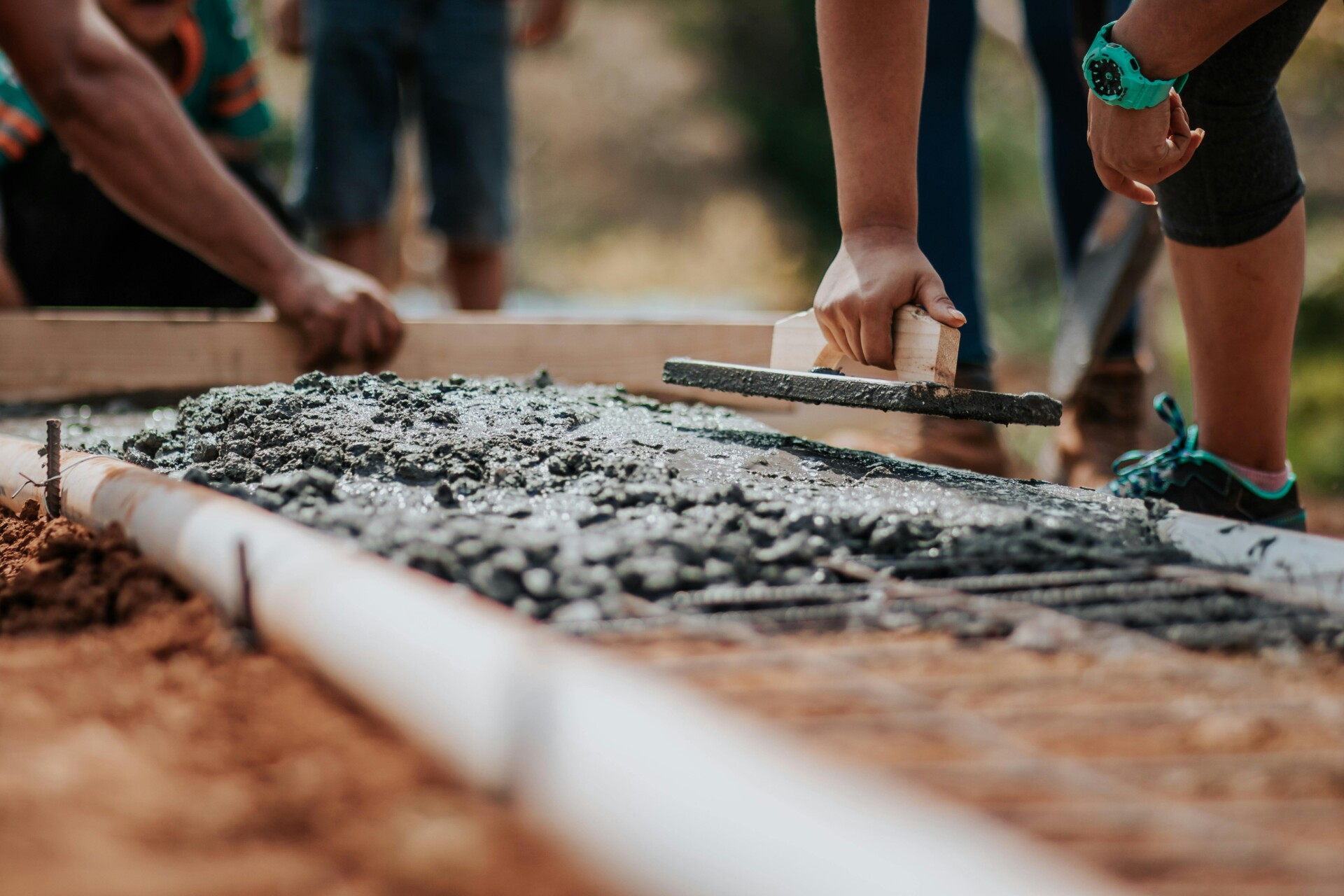
San Antonio’s expansive clay soil presents unique challenges for homeowners. The continuous cycle of soil expansion during rainy periods and contraction during drought creates ideal conditions for foundation movement. If these shifts go unchecked, a hairline crack can quickly evolve into structural damage that compromises your entire home. We’ve seen numerous cases where early detection and prompt repair saved homeowners tens of thousands in potential reconstruction costs.
Foundation maintenance is not just about fixing problems—it’s about protecting your investment. In San Antonio’s competitive real estate market, foundation issues can significantly decrease property values by 10-15% according to recent appraisal data. Our approach focuses on comprehensive solutions that address not only the symptoms but also the underlying causes of foundation problems. By implementing proper drainage systems, soil stabilization techniques, and structural reinforcement, we ensure your home maintains its integrity against the regional soil and climate challenges that make foundation issues so common in our area.
Don’t wait until minor foundation issues become major structural concerns. Contact EB3 Construction for a professional foundation evaluation today.
